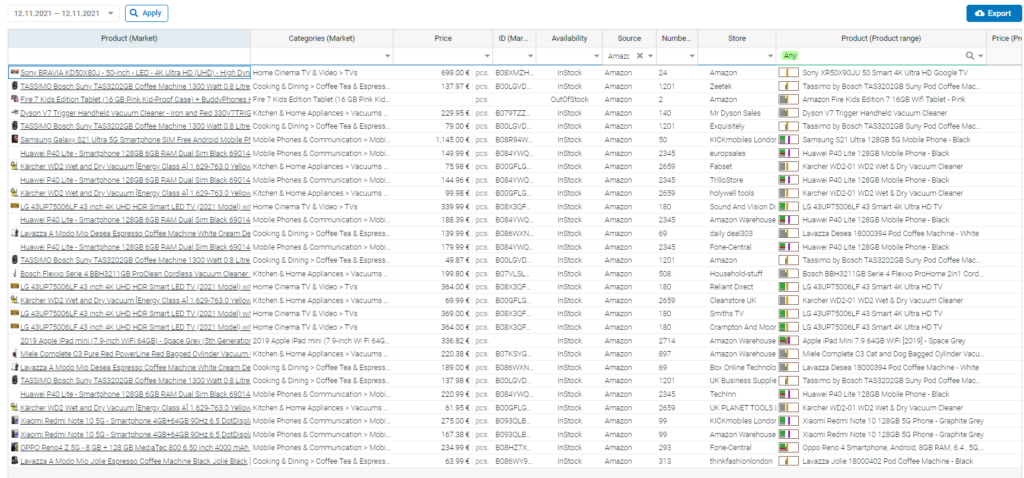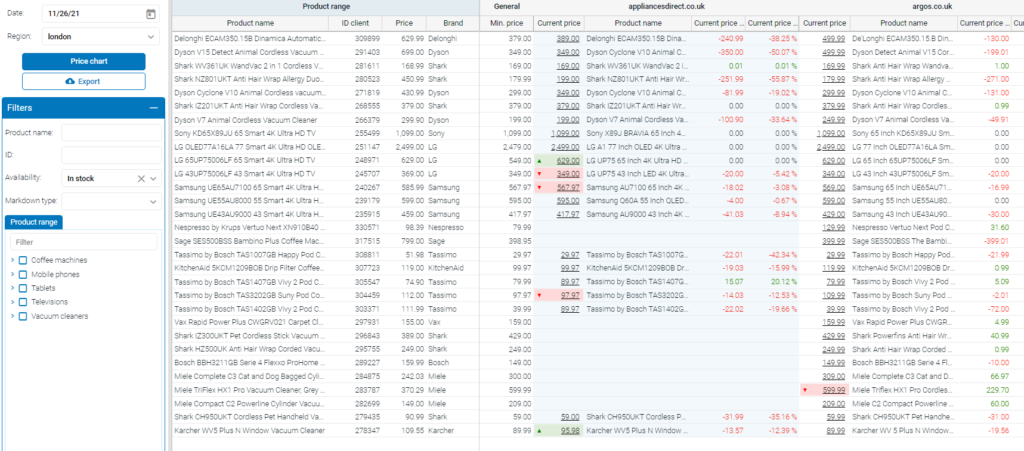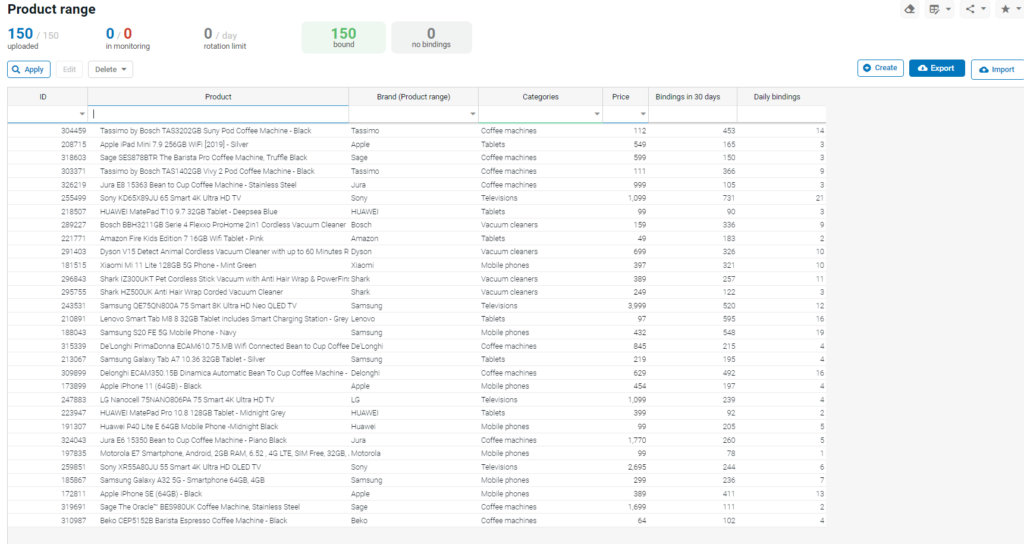Business-related FOMO can be cured. How to kick-start online sales and don’t let the price policy upset you? Let’s find out.

Andrey Safokhin
NNTC Technology Expert
Contact experts
A man in a modern world has picked up another curious anxiety, which is hotly debated in the community of psychology professionals and enthusiasts. FOMO, or fear of missing out, is the feeling of apprehension that one is missing out on exciting events and experiences from which one might benefit emotionally. This fear consumes you, makes you scroll through social media miserably, and feel bitterly jealous when you see other people living the high life on Instagram, while your life is not that shiny.

And now, ladies and gentlemen, I give you a new kind of FOMO specific for retail business owners. This one makes you feel a fear of missing out on an opportunity, losing customers, getting outsmarted by competitors with a better pricing policy, and failing to be quick enough to respond to market trends related to promotional activities. Now, this fear makes you scroll through your competitor’s websites miserably to catch any meaningful change in prices and offerings. You know how that feels, don’t you? The majority of online marketplace and offline store owners do.

The good news is that we know the way out of this and it’s called Metacommerce, an algorithm that will solve this problem once and for all.
Lost opportunity hurts the most
We help many different brands and businesses: FMCG, marketplaces, even niche stores because the solution works well with many different products. Since I admire technology, I’d love to use online electronics stores to illustrate how the Metacommerce algorithm works.
A lost opportunity is the worst for our customers, especially when it comes to catching customers’ attention. For example, when the same cell phone model is available at your competitor’s store at a better price, it means that your competitor takes a decent share of profit out of your pocket.
How come? There is usually more than one reason:
- Late pricing policy updates (a blockbuster movie hero had that cell phone model, so fans rushed to buy it, and competitors raised prices to catch a hype wave)
- Lack of information about seasonal patterns (holidays are coming and people start buying bigger gifts)
- Discounts and better deals are either ahead of or behind the market (did you know that the current year had three Cyber Mondays in a row, and cell phones simply flew off the shelves?)

How Metacommerce algorithm parses your competitors
Metacommerce goes omnichannel to collect all necessary information quickly and efficiently. The algorithm analyzes brand websites, mobile apps, marketplaces, and extensive supply chains, from large distributors to particular online stores. It goes even further if the market competition is fierce (only the strongest will take it all!) by providing functionality for scanning and recognizing price tags in offline stores.
The algorithm is pretty simple: Metacommerce parses given sources, analyzes information received, and generates a report every two hours, for example, or every day at 9 am (depends on personal preferences).
The algorithm gets to every publicly available source of your competitors like a boss to analyze both what is offered in specific product categories of marketplaces and by online chain stores. It can also download the hash of the page and automatically read all necessary information, even recognize the text in the pictures.
Our killer feature is the automatic comparison of the competitor’s assortment with your own (with a bunch of parameters inside!). You have a hundred TVs – a competitor has 200, Metacommerce will find the right ones itself.

Metacommerce algorithm works delicately without getting you into trouble when interacting with websites and that’s just gravy because usually parsing scripts are quite brutal and are often recognized as a DDoS attack to be instantly blocked, but Metacommerce like a cultured guest never abuses the network.
What a Metacommerce report looks like?
…Well, it’s cute. If you want to learn more, please keep reading 🙂
Metacommerce stores all information in a practical table format, so that you could filter and export it, view history graphs, and put it together into informative yet simple reports. Each product in your offering has an ID that automatically correlates with the corresponding SKUs of your competitors.

Let’s say several distributors offer Playstation 5 on the online marketplace. Two of them are official stores and one is a greedy scalper; so greedy that you just wonder if that’s a price or a phone number in the ad. You put your Playstation 5 on sale too, but you really want to avoid both underpricing and overpricing. So how to choose the best price?

Open a Metacommerce report – it’s that easy. There you will see the entire list of Playstation 5 consoles on the websites you’ve asked to parse:
- Official store price
- Various distributors’ prices on a marketplace
- Price fluctuation over time (you might even get surprising insights, like discover that a discount is not a miracle, but a seller’s trick to keep up with the sale rush)
- Detailed information about the product is included: brand, distributor, marketplace, and offer details

If different models of the product are analyzed (for example, Playstation 5 with different storage), you’ll see a specific model price compared to the price of a corresponding model on the competitor’s site. All clear.
Plus, in addition to comparing 1 to 1 (complete coincidence in the parameters), Metacommerce can compare products by similarity (PS5 and Xbox) or even show useful products that you do not have in your assortment.
Metacommerce offers online dashboards; and you can add an unlimited number of users having their personal accounts.
Easy to get started with your data
Metacommerce process can be launched in a few steps:
- Upload a product table into the database (e.g., export one from your ERP system)
- Specify the sources you want to track (competitors’ websites, sections on marketplace sites, etc.)
- The software will match the parameters of a product in your table against those of a similar product on your competitor’s website to find correlations between lots for further price tracking
- Congratulations! You’re ready to parse
The range of products will be updated automatically from that moment on, so you will immediately know which new models are added on the website and which are no longer available.
Now, imagine that you know every point of your competitors’ pricing policies and it takes just 10 minutes a day to complete the analysis. Furthermore, your potential customer is ready to pay lots of money for a new laptop, and this customer knows what model they want exactly: memory capacity, operating system, brand, screen size, and even the color of the keyboard backlight. The customer filters the search item by item and narrows it down to two identical models priced differently. One price is random, the other is yours, strategically calculated through Metacommerce.
Who do you think will be the winner? You will. (Oh, and the customer, of course – the customer always wins).
If you want to learn more about our solution, please visit the NNTC website or sign up for a demo.
